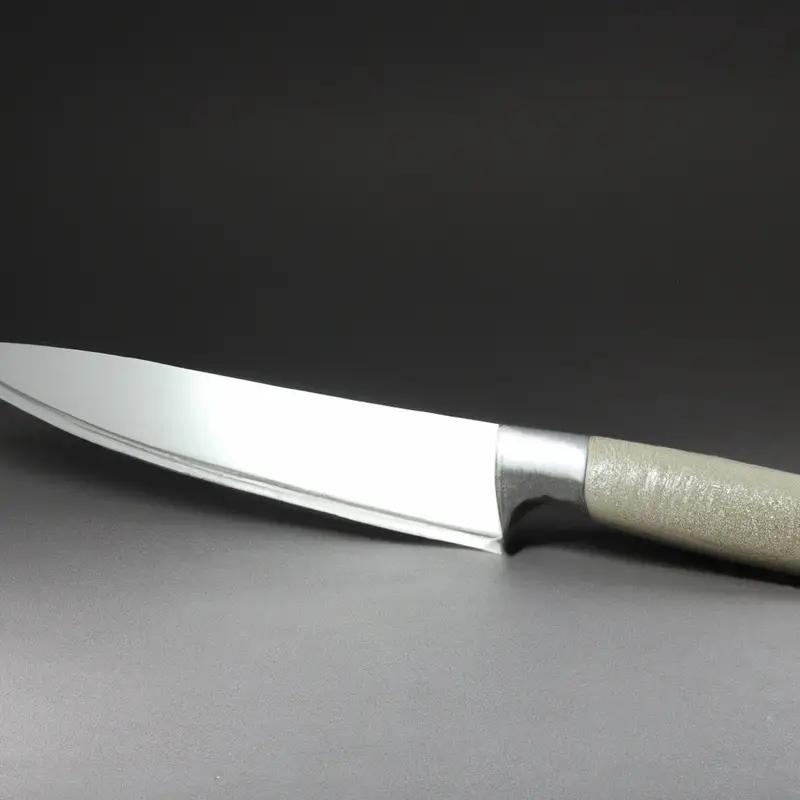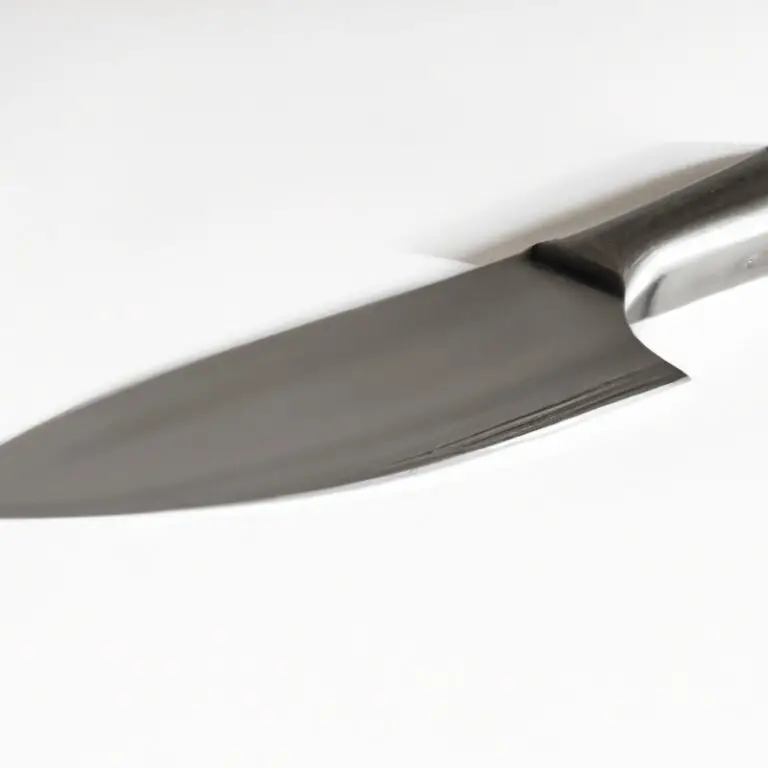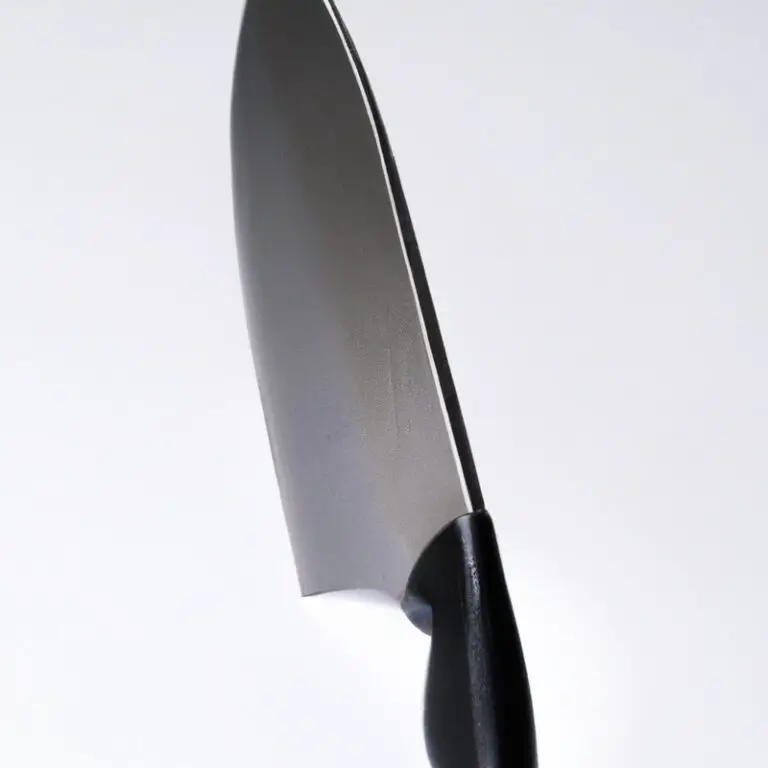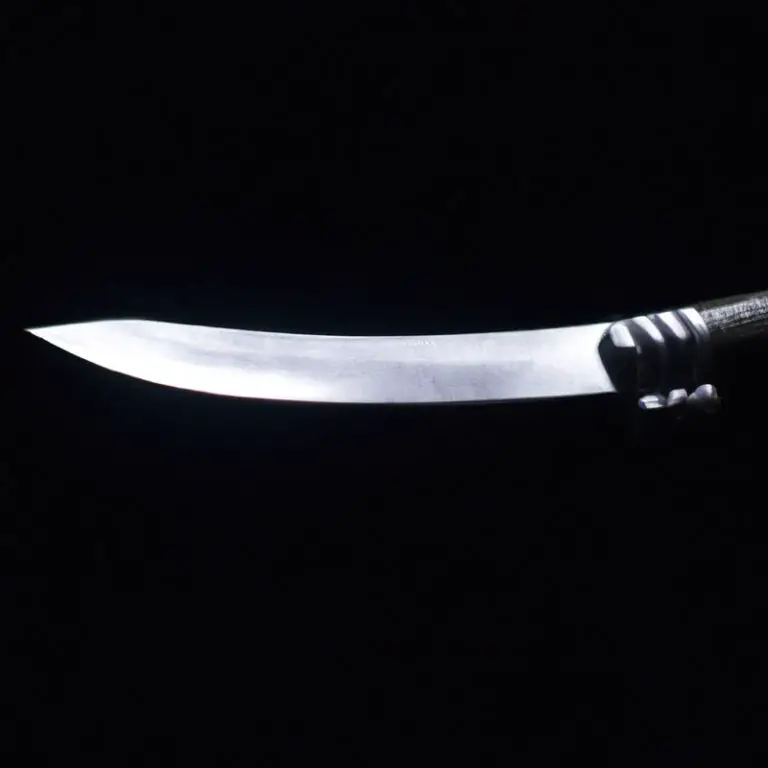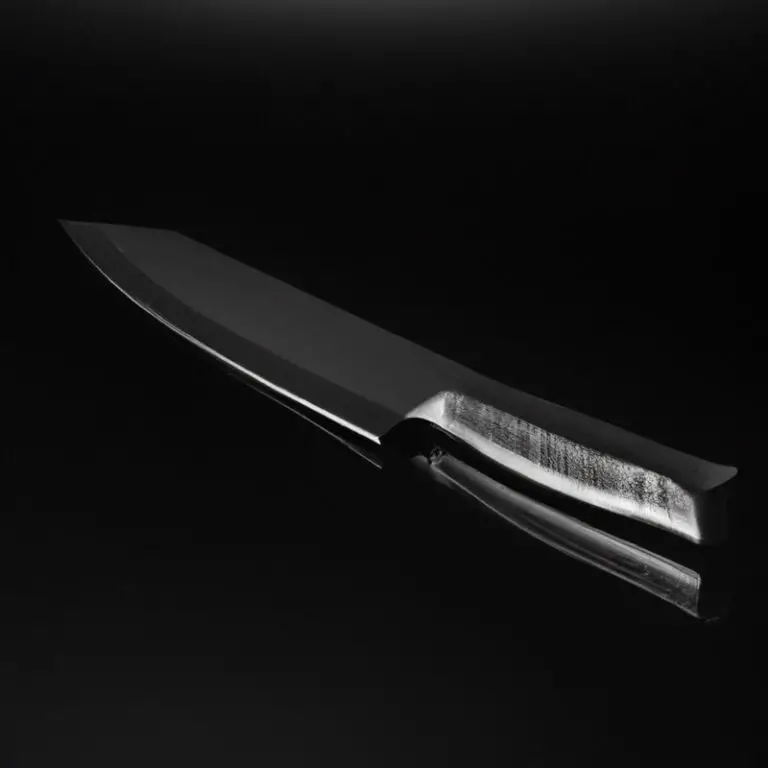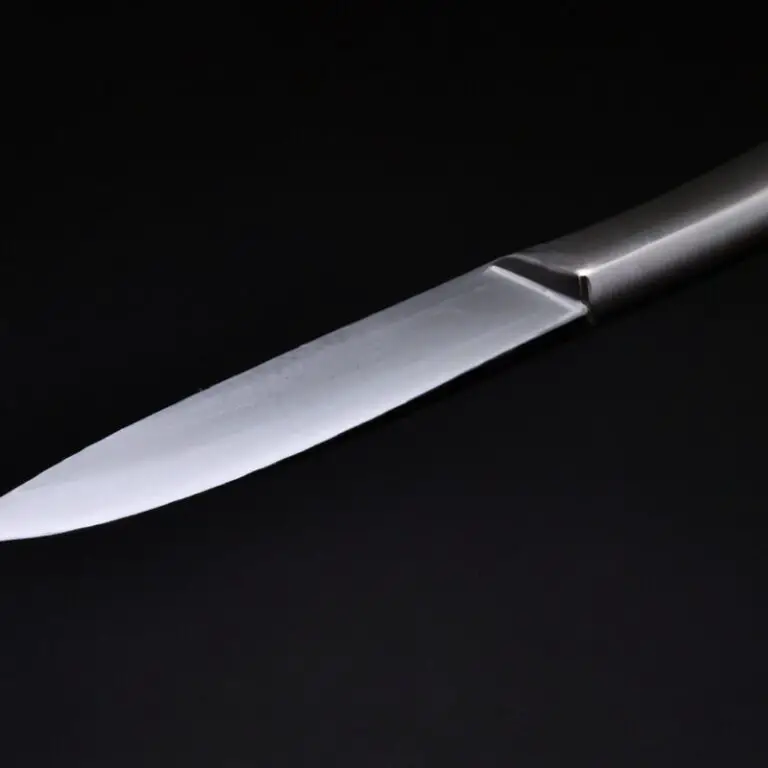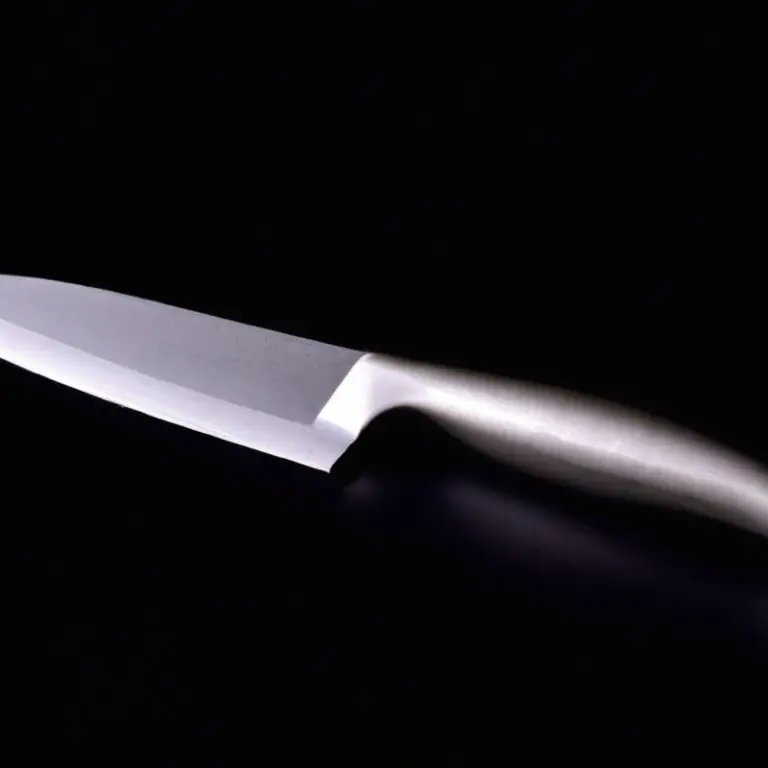What Is The Average Length Of a Santoku Knife? Slice It Up!
Key Takeaways:
- The average length of a Santoku knife typically ranges between 5 and 8 inches.
- The blade length you choose should depend on your personal preference and intended use.
- A longer blade allows for more precision and versatility, while a shorter blade is easier to control for finer tasks.
- It is important to choose a high-quality, reputable brand when purchasing a Santoku knife to ensure longevity and durability.
When it comes to preparing meals efficiently, the type of knife you use can make a world of difference. The Santoku knife, a versatile and popular Japanese blade, has gained a reputation for its precision, comfort, and efficiency in the kitchen.
But with various blade lengths available, it can be challenging to choose the right one for your needs.
In this article, I will give you an overview of the Santoku knife, its history, anatomy, common uses, and benefits. But more importantly, I will guide you in choosing the perfect blade length by answering the question, “What is the average length of a Santoku knife?”
| Brands | Average Length (inches) |
|---|---|
| Wusthof | 7 |
| Shun | 7 |
| Miyabi | 7 |
| Zwilling J.A. Henckels | 7 |
| Global | 7.5 |
| Masamoto | 7.5 |
| MAC | 6.5 |
| Tojiro | 7 |
Understanding Santoku knives: An overview of the Japanese blade
Santoku knives are a type of Japanese kitchen knife that has gained popularity in recent years due to its versatility and efficiency. It is characterized by its shorter, wider blade with a flat edge and rounded tip.
The name “Santoku” translates to “three virtues,” which refers to its ability to perform three essential tasks in the kitchen: slicing, dicing, and chopping.
The Santoku knife originated in Japan in the early 1900s as a response to the Western-style chef’s knife. It was designed to suit the unique demands of Japanese cuisine, which requires precise and delicate cutting techniques.
One of the key features that sets a Santoku knife apart from other kitchen knives is its hollowed-out edge, which helps reduce friction and enables smoother cutting.
It is also thinner and lighter than a traditional chef’s knife, making it easier to handle and control. Santoku knives come in different lengths, ranging from 5 to 7 inches.
The length of the blade depends on the user’s preference and the tasks they plan to perform.
Overall, the Santoku knife is a versatile and efficient tool that can make cooking tasks easier and more enjoyable. With proper care and maintenance, it can last for years and provide excellent performance in the kitchen.
What sets a Santoku knife apart from other kitchen knives?
What sets a Santoku knife apart from other kitchen knives is its unique shape and design. Firstly, Santoku knives have a shorter and wider blade compared to traditional Western knives, allowing for easier maneuverability during chopping.
Additionally, Santoku knives have a flat edge instead of a curved one, allowing for a more precise and uniform cut.
Unlike a chef’s knife, Santoku knives have a straighter edge, which is great for slicing and dicing vegetables. Finally, the tip of a Santoku knife is angled down, which makes it easier to make fine cuts and chop through tougher ingredients.
Overall, Santoku knives are versatile, efficient, and comfortable to use, which makes them a popular choice among chefs and home cooks.
History of Santoku knives: Tracing the origins of this versatile tool
The Santoku knife is a Japanese kitchen knife that has been used for centuries. Its name translates to “three virtues” or “three uses,” indicating its versatility in slicing, dicing, and chopping.
The origins of the Santoku knife can be traced back to the Meiji period in Japan (1868-1912) when Western-style cooking and dining became popular.
Initially, the Santoku knife was designed for home cooking and was used primarily by Japanese housewives. However, over time, its popularity grew, and it became a staple in Japanese professional kitchens due to its versatility and efficiency.
The Santoku knife features a shorter and narrower blade than other traditional Japanese knives, such as the Gyuto or the Yanagiba.
Its blade’s length typically ranges from 5 to 7 inches, making it easier to handle and maneuver than larger knives. While the exact inventor of the Santoku knife is unknown, it is believed to have been created by merging Western-style knife designs with Japanese cutting techniques.
Its wide, rounded tip makes it suitable for slicing, while its flat edge is perfect for dicing and chopping.
Today, the Santoku knife has become a popular kitchen tool worldwide, with various brands and styles available in the market. Its unique design, rich history, and versatility make it a must-have in any kitchen, whether professional or home-based.
The anatomy of a Santoku knife: Breaking down the parts of the blade
A Santoku knife has a unique design that distinguishes it from other kitchen knives. It is a Japanese blade that typically ranges from 5 to 8 inches in length.
Understanding its anatomy is crucial to get the most out of the knife.
The blade of a Santoku knife features a flat edge with a curve towards the handle, called the sheepsfoot. It also has a pointed tip, which helps to make precise cuts.
The blade’s height is typically the same from handle to tip, which gives the knife a uniform cutting edge.
The blade’s spine, located on the opposite side of the sharp edge, provides added strength and stability to the knife. The heel, located at the bottom of the blade, gives the user excellent control when cutting through harder materials.
The handle of a Santoku knife is an essential consideration.
Typically, it is made of wood, plastic, or resin to provide added comfort during use. A sturdy handle helps you keep proper control of the blade while preventing slippage during use.
Overall, understanding the anatomy of a Santoku knife is crucial in selecting the right tool for your kitchen.
The features mentioned are essential to consider when choosing a high-quality Santoku knife.
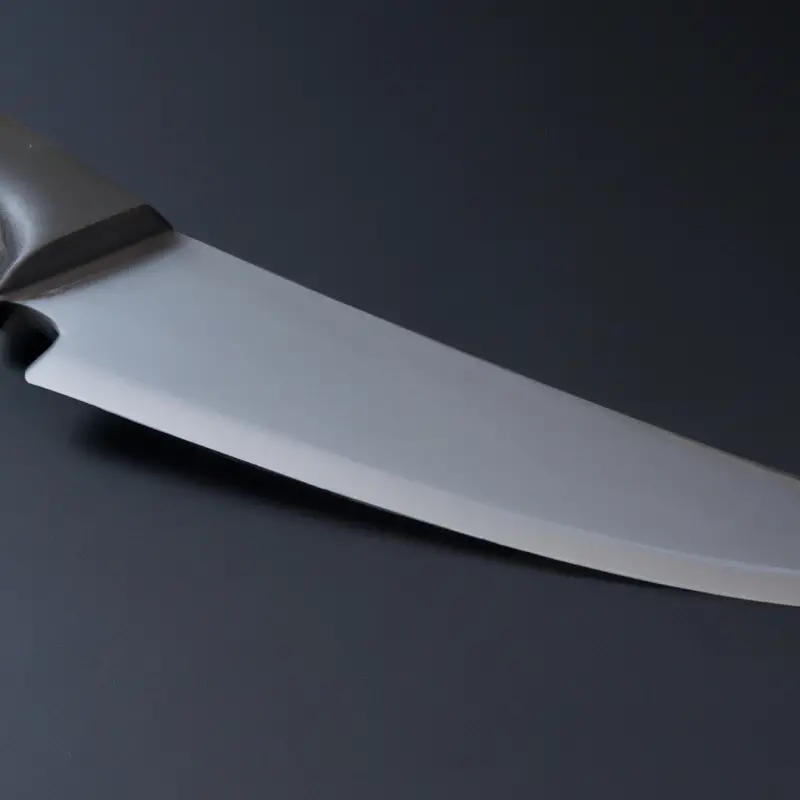
Blade length matters: How to choose the right Santoku knife length for you
The length of a Santoku knife’s blade is crucial in determining its functionality, versatility, and user comfort. When choosing the right Santoku knife length for you, consider the size of your hands, the food you will be preparing, and your cutting technique.
For individuals with smaller hands, a blade length of 5-6 inches is ideal.
If you plan on preparing larger cuts of meat, a longer blade length of 7-8 inches will work best. Those who frequently chop vegetables or prefer a more delicate cutting technique will benefit from a shorter blade length.
It’s important to note that a longer blade length does not necessarily mean a better knife.
A longer blade may give you more leverage, but it may not suit your personal cutting style. Ultimately, the right Santoku knife length for you will depend on your personal preferences and needs.
When purchasing a Santoku knife, look for a trusted brand with a reputation for producing high-quality knives.
A sturdy blade made of high-carbon stainless steel will ensure the knife’s durability and sharpness. Overall, taking the time to choose the right Santoku knife length will result in a more enjoyable and efficient cooking experience.
Common uses of Santoku knives: Slicing, dicing, and more
Santoku knives are incredibly versatile knives that can handle a wide range of kitchen tasks. Some of the common uses of Santoku knives include slicing, dicing, and mincing.
The blade’s flat edge is ideal for chopping herbs and vegetables, while its sharp, pointed tip is perfect for piercing through meats and fruits.
Its wider blade allows for more precise cuts, making it an excellent choice for cutting through large items such as melons or squash. Additionally, the hollow edge (or Granton edge) of some Santoku knives creates air pockets, which helps to prevent food from sticking to the blade while cutting.
Overall, Santoku knives are the go-to tool for any chef looking for a versatile, reliable and easy-to-use kitchen knife.
Comparing Santoku knives to other popular kitchen knives
Santoku knives are often compared to other popular kitchen knives such as chef’s knives and cleavers. While all three knives are versatile and can handle various tasks, there are some key differences.
Compared to a chef’s knife, a Santoku knife has a shorter and wider blade, making it easier to handle and control.
It is also lighter, allowing for more precision cuts. On the other hand, a cleaver is much heavier and thicker than a Santoku knife, making it more suitable for heavy-duty tasks like chopping bones and meat.
When it comes to versatility, a chef’s knife is the winner as it can be used for a wide range of tasks.
However, if you are looking for a knife that is great for precise cuts and chopping vegetables, a Santoku knife is the way to go. In summary, while all three knives have their own strengths, a Santoku knife is a great addition to any kitchen for its precision and ease of use when it comes to delicately slicing and dicing.
The benefits of using a Santoku knife: Precision, comfort, and efficiency
Using a Santoku knife in your kitchen brings a range of benefits that can enhance your cooking experience. Precision is at the top of that list.
The Santoku knife’s flat blade, featuring a “Granton edge,” allows for accurate, clean cuts, while the slightly curved edge helps keep the blade in contact with the food, maximizing the chances for precision.
Santoku knives are also renowned for their comfort and ease of use. The ergonomic handle and balance of the blade allow for a comfortable grip and natural cutting motion that can reduce hand fatigue.
Efficiency is another great advantage of using a Santoku knife.
Its flat blade can scoop the ingredients, allowing for a smooth and continuous cutting motion that speeds up prep time, making cooking more efficient and freeing up time for other tasks. A Santoku knife can improve precision, comfort, and efficiency in the kitchen.
Its long-lasting durability and excellent cutting performance make it an excellent investment for both home cooks and professional chefs.
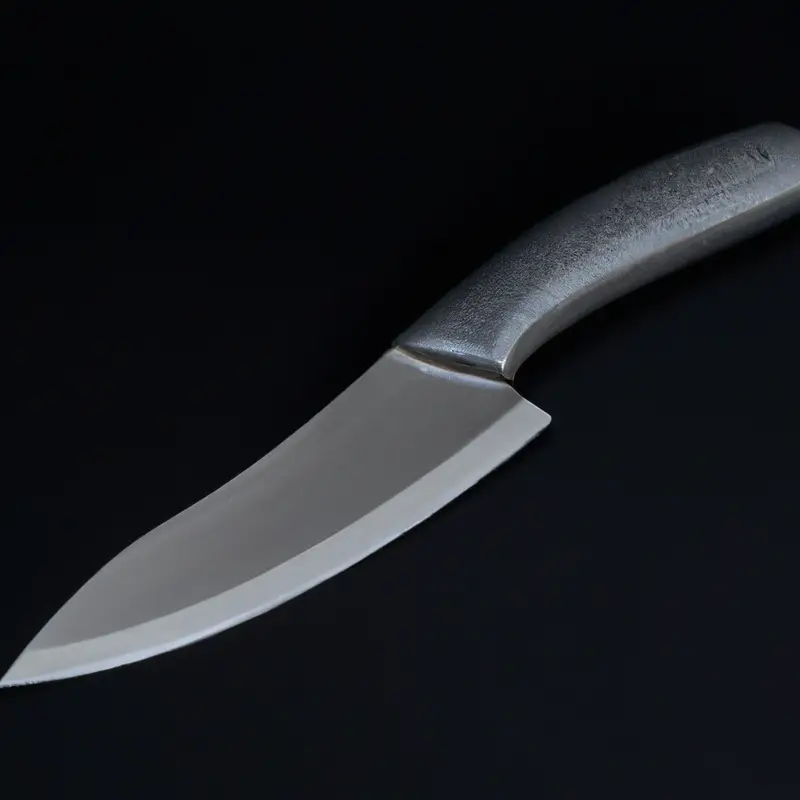
Caring for your Santoku knife: How to maintain the sharpness and longevity of your blade
Proper care and maintenance of your Santoku knife are essential to retain its sharpness and durability. Here are some tips to help you take care of your Santoku knife:
- Hand washing and drying – Avoid putting your Santoku knife in the dishwasher. Instead, wash it with warm soapy water and dry it immediately after use.
- Avoid cutting on hard surfaces – Santoku knives are made for slicing and dicing softer ingredients. Avoid using them on hard surfaces such as glass, ceramics, or marble.
- Regular sharpening – Santoku knives are made from hard steel, and regular sharpening keeps the blade sharp. Use a honing rod or sharpening stone to sharpen your Santoku knife.
- Proper storage – Invest in a knife block or magnetic strip to store your Santoku knife safely. Avoid storing it in a drawer with other kitchen tools, as this can cause the blade to dull or bend.
By following these simple tips, you can ensure that your Santoku knife stays sharp and lasts longer.
The best Santoku knives on the market: Product recommendations and reviews
If you are looking to purchase a Santoku knife, here are some of the best options available on the market:
- Shun Classic 7-inch Santoku Knife – This knife boasts a sharp edge and a comfortable grip, making it a top choice for many chefs.
- Global 7-inch Santoku Knife – With its lightweight design and impressive balance, this knife is a great option for those who prefer a more nimble cutting tool.
- Wusthof Classic 7-inch Santoku Knife – This knife features a full-tang construction and a durable blade that can slice through even the toughest ingredients with ease.
- Miyabi Kaizen 7-inch Santoku Knife – Handcrafted in Japan, this knife combines traditional craftsmanship with modern technology to create a blade that is both beautiful and functional.
- Mercer Culinary Genesis 7-inch Santoku Knife – For those on a budget, the Mercer Culinary Genesis Santoku Knife offers a great value without sacrificing quality.
Overall, when choosing a Santoku knife, it’s important to consider factors such as blade material, handle design, and overall balance. Use these factors and product recommendations to make an informed purchasing decision.
Final Verdict
The average length of a Santoku knife is around 7-8 inches, but the ideal length for you ultimately depends on your personal preferences and intended use. Whether you’re a professional chef or a home cook, investing in a high-quality Santoku knife can vastly improve your efficiency and precision in the kitchen.
When choosing a blade, pay attention to the weight, balance, and grip, as well as the quality of the steel and edge retention.
By properly caring for your Santoku knife, you can ensure its longevity and reliability in your culinary endeavors. Trust in the versatility and effectiveness of this Japanese tool, and elevate your cooking experience to the next level with a Santoku knife.

